Beamish Museum, a living testament to the past, invites you on an extraordinary journey through time and industry. Nestled amidst the picturesque Durham countryside, this captivating museum unveils the rich heritage of the region, showcasing the lives, work, and innovations that shaped the North East of England.
From its humble beginnings as a small collection of historical artifacts, Beamish Museum has grown into a vibrant and immersive experience that brings the past to life. Its sprawling site encompasses a vast array of reconstructed buildings, authentic machinery, and costumed interpreters, offering visitors a glimpse into the region’s industrial and social history.
Beamish Museum
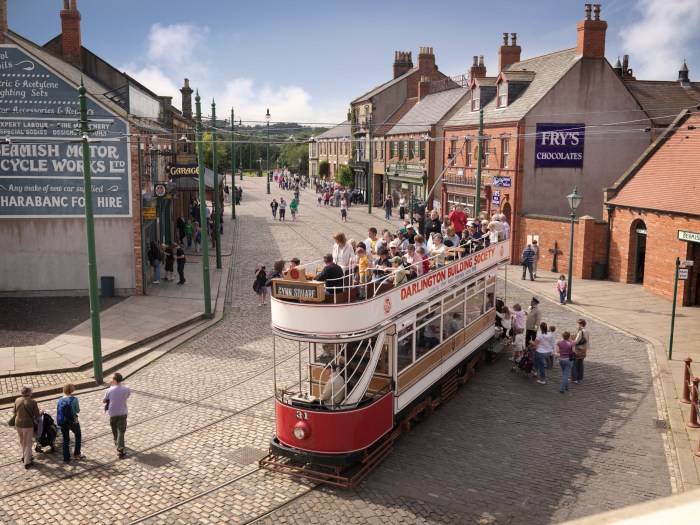
Nestled in the heart of County Durham, England, the Beamish Museum is an open-air living history museum that invites visitors to step back in time and experience life in a bygone era. Established in 1970, the museum has grown to encompass over 350 acres of meticulously recreated historical environments, ranging from Victorian streetscapes to Edwardian pit villages.
The museum’s mission is to preserve and interpret the industrial and social history of North East England, offering a unique and immersive experience that brings the past to life. Through interactive exhibits, costumed interpreters, and hands-on activities, Beamish Museum allows visitors to explore the challenges and triumphs of everyday life in the region from the 1820s to the 1950s.
Beamish Museum is an open-air museum that tells the story of life in the North of England from the 1800s to the 1950s. Visitors can explore a variety of exhibits, including a colliery, a farm, and a town. The museum is also home to a number of animals, including horses, sheep, and pigs.
Beamish Museum is a great place to learn about the history of the North of England and to experience what life was like in the past. It is also a great place to visit for families with children. The museum is located in County Durham, England, and is open every day of the year.
If you are interested in learning more about the history of Belfast, you can visit Belfast City Hall. Beamish Museum is a great place to learn about the history of the North of England and to experience what life was like in the past.
Establishment and Development
The origins of the Beamish Museum can be traced back to the 1950s, when a group of local enthusiasts recognized the need to preserve the rapidly disappearing industrial heritage of the region. In 1965, the Beamish Open Air Museum Trust was established, and the museum opened its doors to the public five years later.
Over the decades, Beamish Museum has undergone significant expansion and development. New exhibits have been added, including a colliery, a shipyard, and a 1950s town. The museum has also expanded its educational programs and community outreach initiatives, making it a valuable resource for students, researchers, and the local community.
Collections and Exhibits
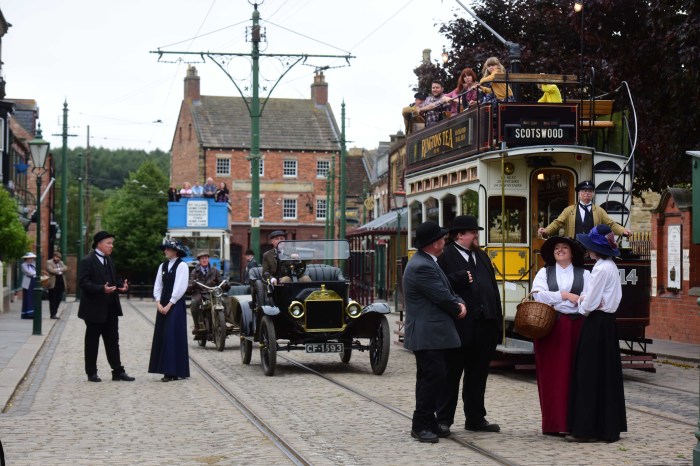
Beamish Museum offers a captivating journey through history, showcasing a vast collection of artifacts, machinery, and displays that bring to life the lives and industries of Northeast England from the 1820s to the 1950s.
The exhibits at Beamish Museum are meticulously curated to tell compelling stories and illustrate the themes of industrialization, community, and everyday life during these transformative eras.
1900s Town
- The 1900s Town recreates the bustling atmosphere of a turn-of-the-century town, complete with shops, a bank, a pub, and a working tram system.
- Visitors can interact with costumed interpreters who bring the town to life and share insights into the daily lives of its inhabitants.
Pockerley Manor and Farm
- Pockerley Manor represents a typical Edwardian country estate, showcasing the lives of the wealthy landowners and their servants.
- The farm exhibits illustrate agricultural practices and livestock management from the early 20th century.
The Colliery
- The Colliery exhibit delves into the history and significance of coal mining in the region.
- Visitors can explore the workings of a 19th-century coal mine, including a pit head, winding engine, and underground tunnels.
The Waggonway
- The Waggonway showcases the transportation of coal and other goods during the Industrial Revolution.
- Visitors can ride on a replica waggonway, pulled by a steam locomotive, to experience the journey.
The 1950s Town
- The 1950s Town recreates the post-war era, featuring shops, a cinema, and a dance hall.
- Exhibits explore the changing lifestyles and consumer culture of the 1950s.
Beamish Hall
- Beamish Hall is a Grade I listed Georgian manor house, showcasing the lives of the wealthy Stote family who owned the Beamish estate.
- Visitors can explore the opulent interiors and learn about the family’s history.
The Pit Village
- The Pit Village recreates the homes and lives of the miners and their families in the early 20th century.
- Exhibits include a miners’ institute, a school, and a row of terraced houses.
Interactive Experiences
Beamish Museum offers an array of interactive experiences that enhance visitor engagement and deepen their understanding of the past. These experiences provide a hands-on approach to history, allowing visitors to immerse themselves in the lives and activities of people who lived in the region during the 1800s and early 1900s.
Costumed interpreters are stationed throughout the museum, providing insights into the daily lives of historical figures. They engage with visitors, answering questions and sharing stories about the people and events that shaped the region’s history. Visitors can also participate in demonstrations of traditional crafts and skills, such as blacksmithing, pottery making, and weaving. These demonstrations showcase the ingenuity and craftsmanship of the past, and provide a glimpse into the everyday activities of people from that era.
Workshops
Interactive workshops offer visitors the opportunity to engage in hands-on activities and learn new skills. These workshops cover a wide range of topics, from traditional cooking and baking to woodworking and blacksmithing. Visitors can choose from a variety of workshops tailored to their interests and skill levels, allowing them to experience the practical aspects of life in the past.
Educational Programs
Beamish Museum offers a range of educational programs that align with its mission to preserve and interpret the industrial and social history of the North East of England. These programs are designed to engage students of all ages, from early years to higher education, and provide hands-on, immersive learning experiences.
The museum’s educational programs are tailored to meet the specific learning objectives of different age groups and curriculum requirements. They focus on developing students’ historical knowledge, critical thinking skills, and understanding of the impact of industrialization on society.
Target Audience
- Early years and primary school students
- Secondary school students
- Further and higher education students
- Adults and families
Learning Objectives
- Develop an understanding of the industrial and social history of the North East of England
- Explore the impact of industrialization on society and the environment
- Enhance critical thinking and problem-solving skills
- Foster a sense of place and belonging
Activities
The museum’s educational programs include a variety of activities, such as:
- Guided tours of the museum’s historic buildings and exhibits
- Interactive workshops and demonstrations
- Role-playing and storytelling
- Historical research projects
- Curriculum-linked resources and lesson plans
Community Involvement: Beamish Museum
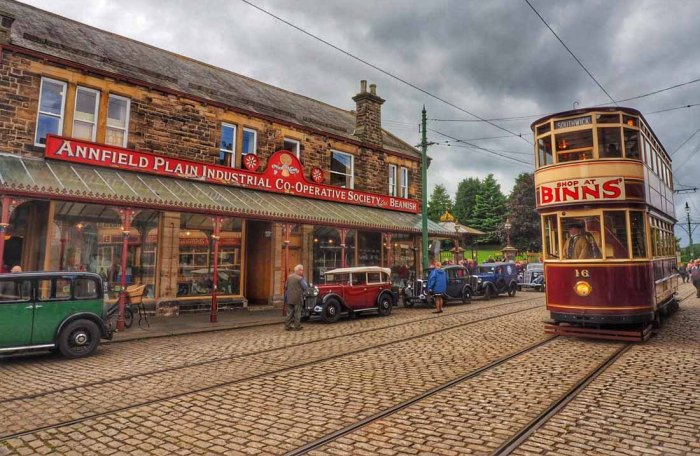
Beamish Museum is deeply committed to fostering strong ties with the local community. Through a range of outreach programs, events, and partnerships, the museum actively engages with residents, businesses, and organizations to create a mutually beneficial relationship.
The museum’s community involvement initiatives are designed to promote cultural heritage, foster inclusivity, and support local economic development.
Beamish Museum is a great place to learn about the history of the North of England. You can explore the streets of a recreated Victorian town, visit a working farm, and even ride on a vintage bus. If you’re interested in space, you can also visit the adler planetarium in Chicago.
The Adler Planetarium is one of the oldest planetariums in the United States, and it offers a variety of exhibits and shows about astronomy. After your visit to the Adler Planetarium, you can head back to Beamish Museum to continue your exploration of the North of England’s past.
Outreach Programs
Beamish Museum conducts various outreach programs to connect with diverse community groups, including schools, community centers, and senior citizen organizations. These programs offer tailored experiences that bring the museum’s collection and history to life.
- Educational Workshops: Interactive workshops provide hands-on learning opportunities for students, exploring topics related to the museum’s exhibits and themes.
- Community History Days: Open events that invite local residents to share their stories, photographs, and artifacts, fostering a sense of shared heritage and belonging.
Community Events
Beamish Museum hosts a range of community events throughout the year, providing opportunities for the public to engage with the museum and its surroundings.
- Annual Heritage Festival: A vibrant celebration of local culture and traditions, featuring traditional crafts, music, and dance performances.
- Vintage Vehicle Rallies: Nostalgic events that bring together classic car and motorcycle enthusiasts, showcasing the museum’s extensive collection of historic vehicles.
Partnerships
Beamish Museum collaborates with local organizations to enhance its community outreach efforts and create a positive impact on the region.
- Local History Societies: Partnerships with local history societies facilitate the exchange of knowledge, research, and artifacts, enriching the museum’s collection and historical interpretation.
- Community Development Groups: Joint initiatives with community development groups aim to support local businesses, promote tourism, and create employment opportunities.
Historical Significance
Beamish Museum holds immense historical significance, serving as a captivating window into the industrial and social tapestry of North East England.
The museum meticulously preserves and interprets the region’s rich past, providing invaluable insights into the lives, work, and communities that shaped this vibrant area.
Preserving Industrial Heritage
Beamish Museum is a treasure trove of industrial heritage, showcasing the region’s pivotal role in the Industrial Revolution. The museum houses an extensive collection of machinery, buildings, and artifacts that vividly depict the processes and technologies that transformed the region.
- The Pockerley Old Hall Farm, dating back to the 17th century, offers a glimpse into traditional agricultural practices.
- The Town Farm, established in the 19th century, showcases the mechanization of agriculture and the impact of new farming techniques.
- The Colliery, a reconstructed coal mine, provides an immersive experience of the arduous and dangerous working conditions faced by miners.
Interpreting Social History
Beyond its industrial heritage, Beamish Museum also delves into the social history of the region. The museum recreates authentic streetscapes and buildings, allowing visitors to step back in time and experience the everyday lives of ordinary people.
- The 1900s Town depicts the daily life of a working-class community at the turn of the 20th century.
- The 1940s Farm portrays the challenges and resilience of rural life during World War II.
- The 1950s Welfare Hall serves as a reminder of the post-war era and the emergence of modern amenities.
Relevance to the Present
Beamish Museum’s historical significance extends beyond its preservation and interpretation of the past. The museum offers a valuable lens through which we can understand the present and appreciate the impact of history on our contemporary world.
By showcasing the challenges and triumphs of the region’s industrial and social past, Beamish Museum fosters a deeper understanding of the roots of our communities and the forces that have shaped our society.
Visitor Experience
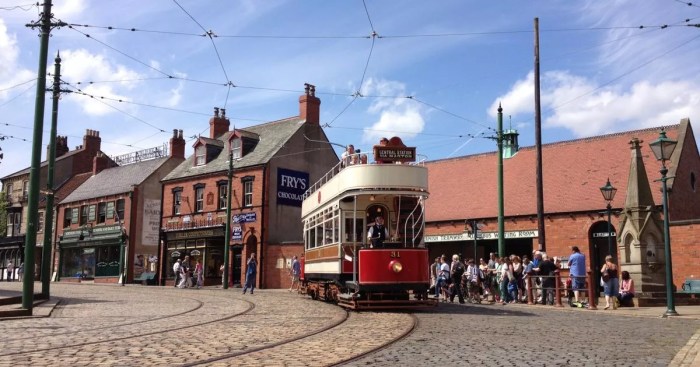
Beamish Museum offers an immersive and interactive experience for visitors of all ages. The museum provides a range of amenities, facilities, and services to enhance the visitor experience.
The museum caters to different types of visitors, including families, students, and researchers. Families can enjoy the interactive exhibits and hands-on activities, while students can benefit from the educational programs and workshops. Researchers have access to the museum’s extensive collections and archives.
Amenities and Facilities
- Interactive exhibits
- Hands-on activities
- Guided tours
- Educational programs
- Workshops
- Collections and archives
- Restaurant and cafe
- Gift shop
- Picnic areas
- Accessible facilities
Catering to Different Visitors
Families
Beamish Museum is a great place for families to visit. The museum has a range of interactive exhibits and hands-on activities that are perfect for children of all ages.
Students
Beamish Museum is a valuable resource for students. The museum offers a range of educational programs and workshops that can help students learn about history and culture.
Researchers
Beamish Museum is home to a vast collection of artifacts and documents. The museum’s collections and archives are a valuable resource for researchers.
Accessibility and Inclusivity
Beamish Museum is dedicated to providing an inclusive and accessible experience for all visitors. The museum understands that individuals have diverse needs, and it strives to create an environment where everyone feels welcome and able to fully engage with its exhibits and programs.
The Beamish Museum, located in the heart of County Durham, England, offers a fascinating glimpse into the past. Step back in time as you explore recreated streets and villages, complete with shops, houses, and even a working farm. For a breathtaking natural wonder, take a trip to Anna Ruby Falls , one of the most picturesque waterfalls in Georgia, USA.
Its cascading waters plunge over a 150-foot drop, creating a mesmerizing spectacle. Upon your return, delve deeper into the history of the region at the Beamish Museum, where you can witness traditional crafts and experience the daily lives of people from bygone eras.
The museum has implemented a range of measures to ensure accessibility. These include:
Physical Accessibility, Beamish museum
- Wheelchair-accessible pathways and ramps throughout the museum grounds
- Designated accessible parking spaces
- Accessible toilets and changing facilities
- Audio-visual guides and transcripts for exhibits
Sensory Accessibility
- Quiet spaces and designated areas for individuals with sensory sensitivities
- Sensory-friendly programs and activities
- Assistive listening devices and captioning services for events
Cognitive Accessibility
- Clear and concise signage and wayfinding
- Trained staff who can provide assistance and support
- Programs and activities designed to accommodate different learning styles
Beamish Museum is also committed to promoting inclusivity and diversity within its staff and volunteers. The museum believes that a diverse workforce and volunteer base enriches the visitor experience and creates a more welcoming environment for all.
Conclusive Thoughts
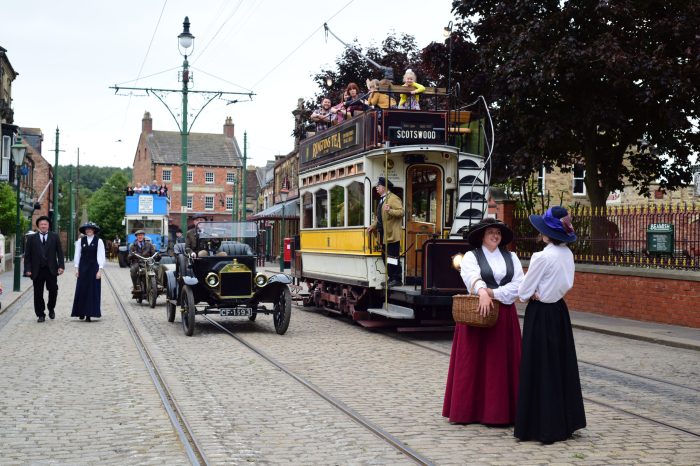
A visit to Beamish Museum is not merely a trip to the past; it is an encounter with the ingenuity, resilience, and community spirit that have defined the North East. As you wander through its cobblestone streets, marvel at the intricate workings of vintage machinery, and engage with knowledgeable interpreters, you will gain a profound appreciation for the region’s industrial heritage and its enduring legacy.
Question & Answer Hub
What is the best way to experience Beamish Museum?
To fully immerse yourself in the Beamish experience, we recommend setting aside a full day to explore the museum’s vast site. Allow ample time to wander through the different exhibits, engage with the costumed interpreters, and participate in interactive activities.
Are there any special events or programs offered at Beamish Museum?
Beamish Museum hosts a variety of special events and programs throughout the year, including themed weekends, workshops, and educational activities. Check the museum’s website for upcoming events and programs.
Is Beamish Museum accessible to visitors with disabilities?
Yes, Beamish Museum is committed to providing an accessible and inclusive experience for all visitors. The museum offers a range of accessibility features, including wheelchairs, mobility scooters, and accessible toilets. Visitors with disabilities are also entitled to a discounted admission rate.